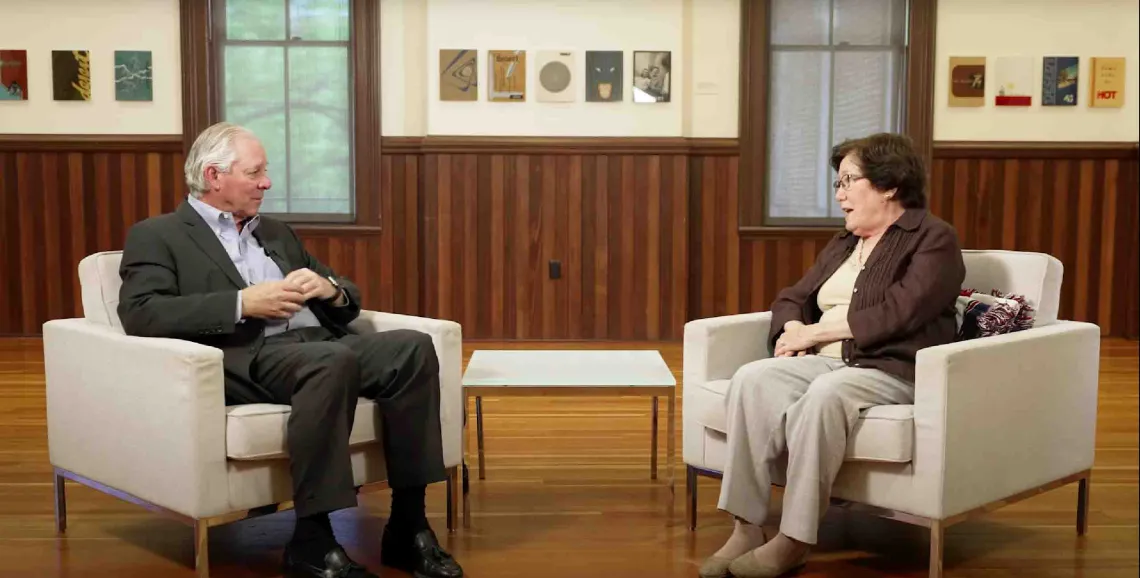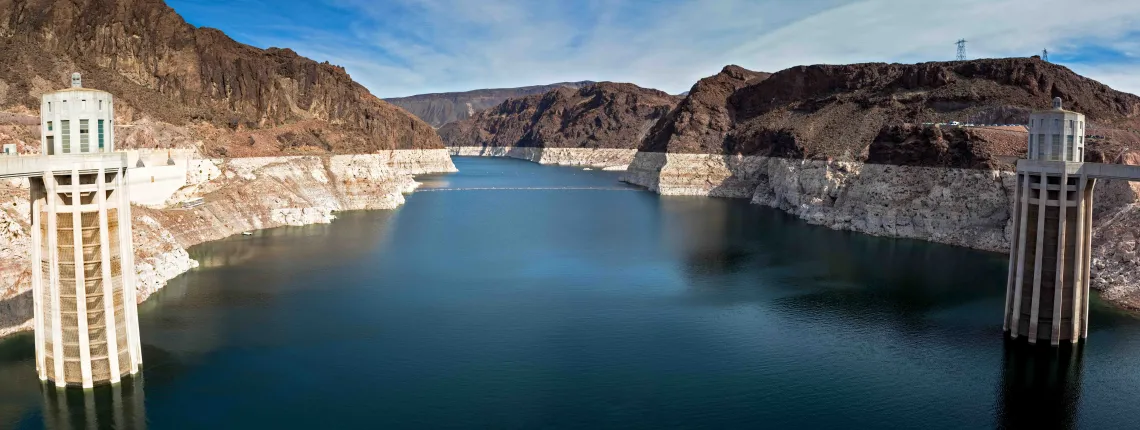Solutions for Changing Climate: Q&A with Sharon B. Megdal
Water expert Sharon B. Megdal shares her perspective on water in a drying climate.

Professor Sharon B. Megdal, a water policy expert, speaks with UArizona President Robert C. Robbins.
The University of Arizona
Sharon B. Megdal is the director of the University of Arizona Water Resources Research Center (WRRC), a Cooperative Extension center and a research unit in the College of Agriculture, Life and Environmental Sciences. She is a specialist in the department of environmental science, the C.W. and Modene Neely Endowed Professor, and a Distinguished Outreach Professor. In May, she was appointed to Gov. Katie Hobbs’ Water Policy Council.
Megdal on Indigenous Communities, Water and Values
Arizona is such a fascinating state, in terms of its geography, its distribution of water and the kinds of communities that we have. We have many rural communities, and we are home to 22 federally recognized Native Nations — and each is different. When it comes to Indigenous communities, I had to learn from almost zero knowledge. I grew up in New Jersey, and going through school, there was never any mention of Native Nations and Indigenous communities. And Native Nations in Arizona are so important to everything in the state, but especially water.
At the Water Center, we help educate people who have a thirst for knowledge and want to learn about Indigenous communities, Indigenous water and Indigenous values, much as I have learned about it. We hosted a conference in 2021 and have integrated it into our programming, including webinars and conferences that I moderate with all Indigenous speakers.
In March, I was at the United Nations water conference where — through our university accreditation and a letter signed by President Robert C. Robbins that committed us to furthering the goals of universal access to clean water and sanitation — we were able to include in our delegation tribal leaders and other people working on tribal issues. What we’re trying to do is help others learn, because we really need to understand each other.
Megdal on Water Use and Challenges to Water Supply in Arizona
The fastest-growing user of water in a growing Arizona has been the municipalities, the communities. The Salt River Project was the first large Bureau of Reclamation dam project to take and harness river waters so they wouldn’t flood and direct them into the central Phoenix area. Back in the early 1900s, over 90% of the water use in the Salt River Project area was for agriculture. Now, over 90% of it is for municipalities. So over time, what we’ve seen is municipal use has grown on the pie chart. Our water use pies have not gotten much bigger, and we really are not using more water than we were using 30 years ago or even 40 years ago. But the pie slices have changed. Municipal [use] has grown, and agriculture [use] has gotten smaller.

Lake Mead, at present, is only about one-third full.
Photo provided by Sharon Megdal
Megdal on Creating a New Equilibrium for the Colorado River
The Colorado River is shared by seven U.S. states, the Republic of Mexico, and 30 tribal nations that have rights to Colorado River water, some of which are still in dispute and haven’t been quantified. It’s estimated that 40 million people depend on the river to some extent. It’s not the only source of water, but demand for water is growing. At the same time, the supplies the river system is producing are shrinking, largely due to long-term drought. We’re experiencing the driest period on record in 1,200 years. There’s a big difference between 1,200 years ago and now, because now we have 40 million people and so much depending on the river.
So, in a nutshell, we have to get into a new equilibrium. We can’t act like the river is producing 16 1/2 million acre-feet of water, which is kind of what it’s been allocated, when the river’s producing more like 14 or 15. Or, in recent years (except for 2023, which was a banner year for water), more like 12 million acre-feet of water. And sometimes the projections are showing it could go down to 9 million acre-feet of water.
What we’ve done over the past 20 years, with a few good years in there, is we’ve been pulling our savings. We had water saved up in Lake Mead — the storage behind Hoover Dam. It is the largest surface storage reservoir in the United States when full. Right now, it’s about one-third full.
I use the analogy of drawing on savings. People may think, “Alright, I’m going to draw on savings, I need the income — but I’m going to go deposit more money in once I get that next paycheck.” But then you lose your job.
That’s the kind of analogy I’ve been using. We keep thinking that we’re going to get a good winter. And over the last 23 years, we’ve only had a couple. So even with this winter question that comes up — is this winter helping? Sure, it’s helping. It’s not hurting, but it’s not enough for us to say, “Hey, we’re out of trouble here.”
What we need to do, and I’m optimistic we can do it, is we need to adapt. And that means everybody — that means agriculture, that means communities, that means industry. This is truly one of those things — we’re all in it together. So much of what is happening with the water community, on campus and elsewhere, is working on some of these solutions. How do we produce the same amount of food, or more, with less water? How do we reuse water? Some people don’t want to think about reusing treated wastewater, but wastewater is treated to such high standards these days. And how do we use that? Do we use it for agriculture? Do we use it for people?
We’re working on solutions, and everybody needs to be on deck to do the work.
